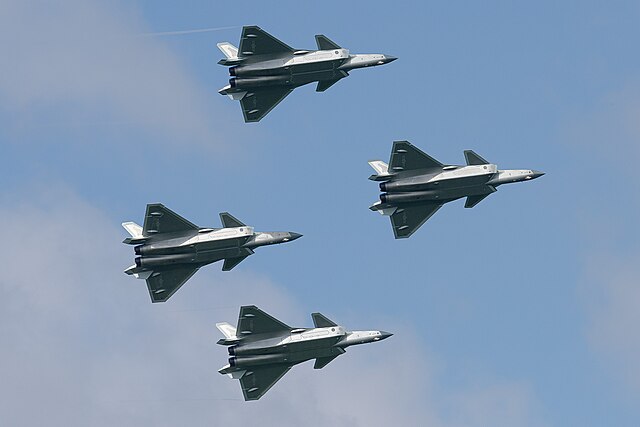It’s about time we talked about the elephant in the room: China. Step into any defense tech conference, and the threat from Beijing looms large. China’s military is building up and adopting cutting-edge tech at an unprecedented pace, and the US and its allies are failing to keep up, or so the saying goes..
But we had to ask: What does China’s military build-up actually look like? And how does the country stack up against the US in terms of cutting-edge tech, like drones?
By the numbers: China has, indeed, poured money into its military since Xi Jinping became president over a decade ago. In 2013, the military budget was just 720B yuan ($98.8B); this year, it’s 1.78T yuan ($245.65B) and likely to increase.
- China now has the second-largest defense budget in the world behind the US.
- Xi and his government introduced the idea of military-civil fusion, breaking down the barriers between commercial tech, research, and the military. The goal is to become the most technologically advanced army in the world.
- The government has invested heavily in shipbuilding, submarines, and missiles, including in the development of hypersonic missiles.
- China under Xi has also invested heavily in satellites and other surveillance technology.
Earlier this month, the government released its annual military report, which called for a 7.2% increase in the defense budget and a continued focus on technological advancement, troop readiness, and increased self-sufficiency in defense production, especially in light of US tariffs.
Hold your horses: According to some experts, China isn’t obsessed with new-age military tech the way the US is. Its commercial drones—super-cheap DJI drones, for the most part—are mega-popular globally. But Zack Cooper of the American Enterprise Institute told Tectonic that its bigger automated systems are pretty much copies of what the US has and haven’t been battle-tested.
Instead, China has focused a lot of its budget on legacy tech.
“[China], for example, has developed a larger suite of very advanced long-range missiles than the US has, and they did that decades ago,” Cooper said. In the last decade, they’ve also built loads of ships and aircraft carriers.
“I think the instinct is to have a more balanced force that includes power production capabilities as well as these unmanned systems,” Cooper said. It’s a lot easier to exert control over a territory with massive ships than with drones, he added. But it also costs a hell of a lot more.
War plans: US Navy Lieutenant Commander Trevor Phillips-Levine, an expert on unmanned systems deployed in the Indo-Pacific, says that China’s main advantage—especially in a future fight over Taiwan—is attritable mass. DJI drones might not be as advanced as some US systems, but they are cheap and pretty painless to lose.
“Taiwan’s proximity to China gives the PRC the ability to apply serious mass in terms of firepower from both ballistic and cruise missiles, in addition to the cheaper drone systems that [can] be used to strike or saturate air defenses,” he wrote to Tectonic.
“Some war games the Marines ran showed beach defenders taking 30% casualties if swarming munitions were used against them,” he added.
To Phillips-Levine, this makes it pretty clear where the US should invest its budget in the next few years: in cheap, attritable drones and c-UAS systems that can take out their Chinese counterparts. It’s expensive—and also silly—to shoot down a drone with a multi-million dollar cruise missile, he said.
The expensive stuff, per Cooper, can be saved for the fancy new warships.

